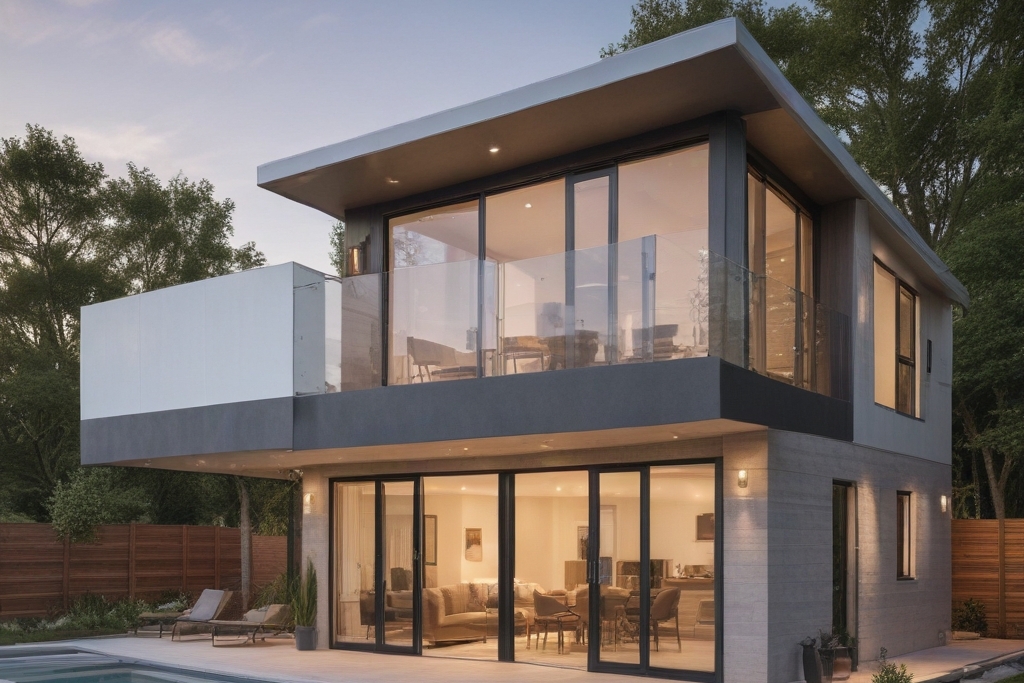Prefabricated Homes for Seniors: An Affordable and Convenient Housing Solution
As more seniors seek comfortable, affordable, and efficient living arrangements, prefabricated homes have emerged as a popular solution. These homes, also known as “prefab” or modular homes, offer numerous benefits tailored to the needs of the 55+ community, making them an attractive option for retirement living. This article will explore the key features, benefits, pricing, and considerations of prefabricated homes for seniors, providing a comprehensive guide to help make informed decisions about this modern housing trend.
What are Prefabricated Homes?
Prefabricated homes are structures built off-site in sections and then transported to the home site for final assembly. This method allows for faster construction times, lower costs, and better quality control compared to traditional home building.

Why Prefabricated Homes are Ideal for Seniors
For seniors, downsizing or moving to a home that requires less maintenance is often a priority. Prefabricated homes provide a range of benefits that make them well-suited for retirees:
- Affordability : Prefab homes are typically more affordable than traditional stick-built homes. For seniors on a fixed income, this makes homeownership more accessible. The reduced cost of materials, labor, and construction time leads to significant savings.
Types of Prefabricated Homes for Seniors
There are several types of prefabricated homes, each with its own set of advantages. Seniors can choose the type of home that best fits their lifestyle, budget, and space requirements.
| Type of Prefab Home | Description | Key Features for Seniors |
|---|---|---|
| Modular Homes | Built in sections in a factory and assembled on-site. | Customizable designs, energy-efficient, built to local building codes. |
| Manufactured Homes | Built on a permanent chassis, often more affordable than modular homes. | Lower cost, single-story living, ideal for seniors who prefer mobility. |
| Panelized Homes | Constructed using large panels assembled on-site. | Fast construction, adaptable designs, energy-efficient materials. |
| Tiny Homes | Smaller, compact living spaces with minimalistic designs. | Affordable, low-maintenance, ideal for downsizing and aging in place. |
| Container Homes | Built from repurposed shipping containers, offering a modern and eco-friendly option. | Unique designs, sustainable living, suitable for environmentally-conscious seniors. |
Cost of Prefabricated Homes for Seniors in 2024
The cost of prefabricated homes varies based on several factors, including the size, type, and level of customization. Generally, prefab homes cost between $50 to $200 per square foot , making them significantly more affordable than traditional homes, which can cost upwards of $150 to $400 per square foot .
Below is a table outlining the average costs for different types of prefabricated homes, including potential customization for seniors:
| Type of Prefab Home | Average Cost (2024) | Customization Costs | Total Estimated Cost |
|---|---|---|---|
| Modular Homes | $100,000 – $250,000 | $20,000 – $50,000 | $120,000 – $300,000 |
| Manufactured Homes | $50,000 – $150,000 | $15,000 – $40,000 | $65,000 – $190,000 |
| Panelized Homes | $70,000 – $180,000 | $10,000 – $30,000 | $80,000 – $210,000 |
| Tiny Homes | $30,000 – $80,000 | $5,000 – $15,000 | $35,000 – $95,000 |
| Container Homes | $50,000 – $100,000 | $10,000 – $25,000 | $60,000 – $125,000 |
Key Features of Senior-Friendly Prefabricated Homes
To ensure that prefabricated homes meet the unique needs of seniors, manufacturers offer various features that enhance comfort, safety, and accessibility:
- Single-Story Layouts : Many prefab homes for seniors are designed with single-story living in mind, eliminating the need for stairs and making it easier for those with mobility issues.
- Accessible Bathrooms : Senior-friendly prefab homes often include accessible bathrooms with walk-in showers, grab bars, and non-slip flooring.
- Wider Doorways and Hallways : These features allow for easier navigation, especially for those who use walkers or wheelchairs.
- Energy-Efficient Features : Seniors can benefit from energy-efficient windows, insulation, and appliances, which help reduce utility costs and contribute to a more comfortable living environment.
- Low-Maintenance Materials : Prefabricated homes for seniors are typically built with materials that require minimal upkeep, such as vinyl siding, composite decking, and durable roofing.
Considerations When Choosing a Prefabricated Home for Seniors
While prefabricated homes offer numerous advantages, seniors should consider the following factors before making a purchase:
- Location and Zoning : Not all areas permit prefabricated homes, so it’s essential to research local zoning regulations and restrictions. Seniors should choose a location that is close to essential services such as healthcare facilities, grocery stores, and recreational activities.
- Financing Options : Financing a prefabricated home can be different from traditional home loans. Some lenders offer special financing for modular and manufactured homes, but it’s important to explore options and choose a plan that fits the budget.
- Customization Needs : Seniors should assess their current and future needs when customizing their prefab home. Features that improve accessibility and comfort will ensure that the home remains suitable as they age.
- Resale Value : While prefabricated homes are more affordable upfront, their resale value can vary depending on the type of home, location, and market conditions. Modular homes typically retain their value better than manufactured homes.
Prefabricated homes offer an affordable, customizable, and energy-efficient housing solution for seniors. With a variety of designs and options, these homes can be tailored to meet the specific needs of the 55+ community, providing a comfortable and low-maintenance living environment. Whether it’s a modular home, tiny home, or a container home, seniors can enjoy the financial and practical benefits that prefab homes bring, making them an excellent choice for retirement living.
References:
- U.S. Department of Housing and Urban Development: https://www.hud.gov
- Manufactured Housing Institute: https://www.manufacturedhousing.org
- Modular Home Builders Association: https://www.modularhousing.com

